Refine search
Actions for selected content:
5817 results in Programming Languages and Applied Logic
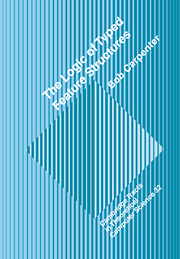
The Logic of Typed Feature Structures
- With Applications to Unification Grammars, Logic Programs and Constraint Resolution
-
- Published online:
- 12 October 2009
- Print publication:
- 26 June 1992
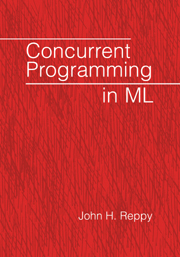
Concurrent Programming in ML
-
- Published online:
- 07 October 2009
- Print publication:
- 13 August 1999
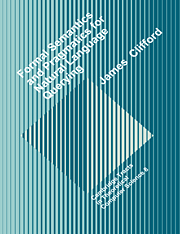
Formal Semantics and Pragmatics for Natural Language Querying
-
- Published online:
- 06 October 2009
- Print publication:
- 29 June 1990
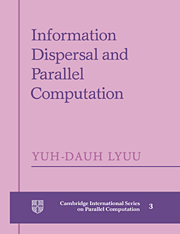
Information Dispersal and Parallel Computation
-
- Published online:
- 03 October 2009
- Print publication:
- 29 January 1993
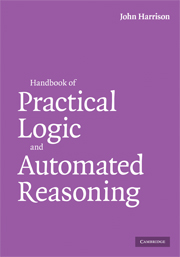
Handbook of Practical Logic and Automated Reasoning
-
- Published online:
- 30 September 2009
- Print publication:
- 12 March 2009
24 - Computational science: a new frontier for computing
-
-
- Book:
- From Semantics to Computer Science
- Published online:
- 06 August 2010
- Print publication:
- 24 September 2009, pp 529-546
-
- Chapter
- Export citation
16 - Nominal verification of algorithm W
-
-
- Book:
- From Semantics to Computer Science
- Published online:
- 06 August 2010
- Print publication:
- 24 September 2009, pp 363-382
-
- Chapter
- Export citation
20 - Two-by-two static, evolutionary, and dynamic games
-
-
- Book:
- From Semantics to Computer Science
- Published online:
- 06 August 2010
- Print publication:
- 24 September 2009, pp 465-488
-
- Chapter
- Export citation
5 - Kahn networks at the dawn of functional programming
-
-
- Book:
- From Semantics to Computer Science
- Published online:
- 06 August 2010
- Print publication:
- 24 September 2009, pp 95-138
-
- Chapter
- Export citation
Contents
-
- Book:
- From Semantics to Computer Science
- Published online:
- 06 August 2010
- Print publication:
- 24 September 2009, pp v-viii
-
- Chapter
- Export citation
23 - Can a systems biologist fix a Tamagotchi?
-
-
- Book:
- From Semantics to Computer Science
- Published online:
- 06 August 2010
- Print publication:
- 24 September 2009, pp 517-528
-
- Chapter
- Export citation
14 - The Leordo computation system
-
-
- Book:
- From Semantics to Computer Science
- Published online:
- 06 August 2010
- Print publication:
- 24 September 2009, pp 309-336
-
- Chapter
- Export citation
4 - The semantics of dataflow with firing
-
-
- Book:
- From Semantics to Computer Science
- Published online:
- 06 August 2010
- Print publication:
- 24 September 2009, pp 71-94
-
- Chapter
- Export citation
25 - The descendants of Centaur: a personal view on Gilles Kahn's work
-
-
- Book:
- From Semantics to Computer Science
- Published online:
- 06 August 2010
- Print publication:
- 24 September 2009, pp 547-560
-
- Chapter
- Export citation
7 - Program semantics and infinite regular terms
-
-
- Book:
- From Semantics to Computer Science
- Published online:
- 06 August 2010
- Print publication:
- 24 September 2009, pp 165-168
-
- Chapter
- Export citation
12 - Towards a theory of document structure
-
-
- Book:
- From Semantics to Computer Science
- Published online:
- 06 August 2010
- Print publication:
- 24 September 2009, pp 265-280
-
- Chapter
- Export citation
17 - A constructive denotational semantics for Kahn networks in Coq
-
-
- Book:
- From Semantics to Computer Science
- Published online:
- 06 August 2010
- Print publication:
- 24 September 2009, pp 383-414
-
- Chapter
- Export citation
9 - Generalized finite developments
-
-
- Book:
- From Semantics to Computer Science
- Published online:
- 06 August 2010
- Print publication:
- 24 September 2009, pp 185-204
-
- Chapter
- Export citation
18 - Asclepios: a research project team at INRIA for the analysis and simulation of biomedical images
-
-
- Book:
- From Semantics to Computer Science
- Published online:
- 06 August 2010
- Print publication:
- 24 September 2009, pp 415-436
-
- Chapter
- Export citation
3 - Sequential algorithms as bistable maps
-
-
- Book:
- From Semantics to Computer Science
- Published online:
- 06 August 2010
- Print publication:
- 24 September 2009, pp 51-70
-
- Chapter
- Export citation
